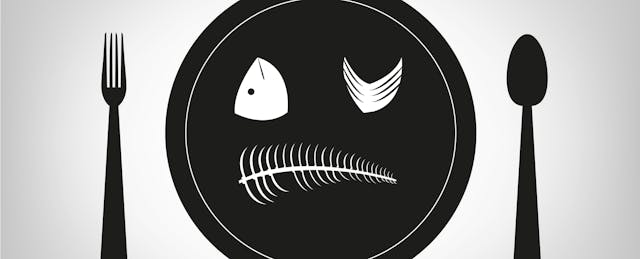Dispelling loneliness. Building community. Helping college students share extra meal swipes with hungry classmates. There’s an app for that!
When Jon Chin was a grad student at New York University in 2013, he happened upon a Facebook page where students anonymously posted their secrets. One post in particular caught his eye: A classmate wrote that he was having trouble obtaining food. Chin himself had faced food insecurity as a child, and the post made him nauseous. Piqued, Chin continued to follow the online chat and, after some weeks, he saw new posts from additional students admitting they were not getting enough to eat, either.
Then, something extraordinary happened. “Other students started to reply, saying, ‘I have extra meal swipes. Send me a message and I’ll [meet you to] swipe you to give you a meal,’” says Chin. “I saw that as an opportunity to really innovate and help build something bigger.”
Chin went on to do just that, using his software development skills to create an application that would connect hungry students with classmates who had extra meal swipes. Along the way, he developed tips that any educator—or student—can use to fulfill a hidden need in a university community.
Bringing Tech To the Cafeteria Table
Once Chin decided to build a digital platform with social impact, he promised himself he would not leave his desk until he had finished. Some 24 hours later, he’d built the prototype for Share Meals.
The initial response exceeded his expectations. “People loved it,” says Chin. “We launched in the last week of the school year, and in just seven days, we raised 800 meal swipes [for] 400 [requests].”
Since Share Meals first went live, Chin has been busy. He earned a master’s degree in creative writing and poetry from Brooklyn College, began a master’s degree program in English education at NYU, and is now an adjunct lecturer at CUNY. At the same time, he’s continued to refine both his app and his outreach to impact students.
Chin says that some students have just $25 for two weeks’ worth of groceries, and when their funds run out, they skip meals—some even going a whole day without food. “[It] goes back to the larger issue of college affordability,” he says. In some cities, the high cost of living only compounds the problem. Share Meals, says Chin, “fills in a lot of gaps that universities have when it comes to serving students who are food insecure.”
To make it easy for students to find one another for shared meals, Chin modeled his app’s real-time map display after those used by Uber and Lyft: If a user wants to share meal swipes, she logs in, and her location will show up immediately. Spare meals can be offered all at once or one at a time. The platform also features a list of upcoming local events offering free food.
Only students who attend the same school get matched up by Share Meals. To participate in the program, students must register with their “.edu” email address to verify that they are enrolled in a university. However, the email is kept private, with students communicating via a chat feature embedded in the app. (Chin notes that this online chat has allowed students to connect in a more personal way, which has led to both friendships and romances.)


Promoting Humanity Through Code
On a personal level, creating Share Meals has been a “huge, major event” in Chin’s life. He uses his experience as a reference point to teach software engineers to be more “socially minded.” He even piloted a class at The Cooper Union in the summer of 2018 called, Computer Science and Entrepreneurship for Social Good.
Currently, Share Meals serves students at NYU and Columbia University in New York and at Rutgers University in New Jersey. Chin says he plans to continue working to bring Share Meals to more colleges and universities. And he will soon attend a summit hosted by Universities Fighting World Hunger, where students, administrators, and faculty from all over the world will convene for two days to network and share best practices.
Join the Club: Educators interested in learning more about Faculty Club opportunities, or being featured in an interview such as this one with Jon Chin, are invited to reach out to us at educators@coursehero.com.
Sound Advice: Chin’s Algorithm for Launching a Charitable App
When solving the problem of student hunger, doing it via an online platform is arguably the most cost-effective approach. While maintaining a food pantry can cost upwards of $30,000 per year, Chin says, Share Meals required an outlay of about $250. The same may hold true for other charitable works.
For anyone seeking to fulfill a hidden need in a university community using technology, Chin offers these tips:
1. Keep costs low by doing your homework
Creating a clear list of requirements—such as user experience and functionality—can ensure that the project stays on budget.
2. Dispel social stigma by changing the language
To maintain and uphold the dignity of students who use the app, Chin and his team take great care with the language they use in and around the platform. The meals are not “donations” or “leftovers.” Rather, the experience is viewed as “two students meeting over lunch.”
3. Spread the news by forming partnerships
Students, food pantries, and social media administrators can help get the word out about a new program. Chin says faculty members play a critical role in raising awareness of Share Meals because they often have a good idea of who in their classroom is hungry.
4. Ensure continuity by keeping good records
Share Meals relies heavily on help from student ambassadors. To ensure seamless transfer of knowledge from one graduating class to the next, Chin recommends using Word or Google docs to keep track of all communication, key steps and processes, and contributions.
5. Branch out by considering tangential needs
Chin’s social impact extends beyond the app. Last year, he helped organize a large pack-athon of 10,000 shelf-stable meals and smaller events in which 100-plus sandwiches were placed in on-campus community refrigerators. Chin also helped establish The Open Kitchen community cooking classes, which teach students foundational food skills.
Currently, Chin is developing the Share Meals Smart Pantry, a specialized vending machine to give universities a low-cost entry point to establishing or expanding an on-campus food pantry. The prototype is planned for deployment at New York’s Hunter College in 2019.
Ink Me!
As an adjunct lecturer of English at City University of New York, Chin needed a way to light up the creative side of the brain for students in high-tech majors, nursing, and other non-humanities disciplines. By musing on the possible origins and meanings behind tattoos, he reasoned, these students might learn to tap into their own hidden inspiration and beat writer’s block.
“When I told them they were going to draw on my arm, they were so shocked,” Chin says. “They were, like, ‘Is this real life? Are you kidding me?’” To learn how Chin structures this body art exercise—and see examples of students’ work—visit Course Hero’s Faculty Club page to read, “Strengthen English Composition Skills with a Lesson in Tattoos.”



